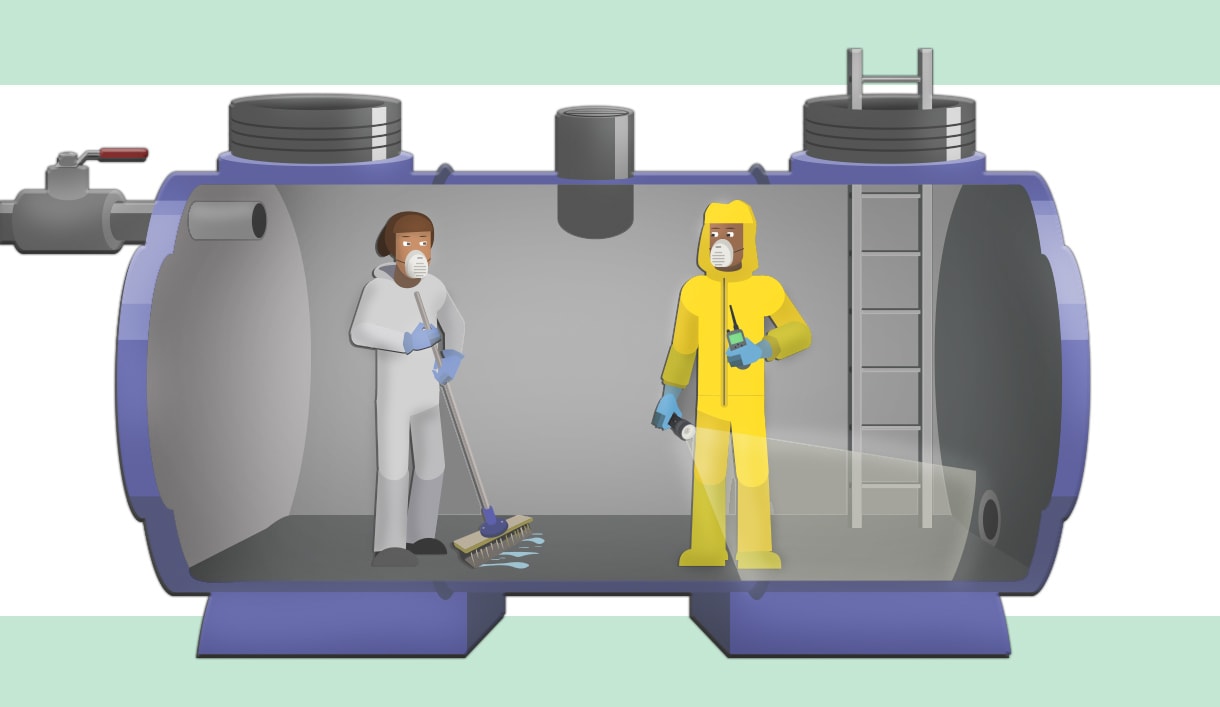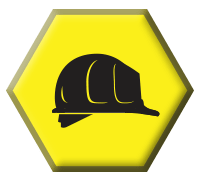A Leap in the Dark – Safety Precautions in Confined Spaces
Considering the Risks, Preparation and Appropriate PPE
Mentioning ‘confined spaces’ probably conjures up some fairly potent claustrophobic – and not entirely pleasant – images in the mind for most. However, do you really know what to look out for and how to address the inherent dangers of entering these spaces?
Work within a confined space is likely to be required in a variety of industries and the hazards involved should never be taken lightly; but what exactly is ‘confined’ in legal terms and how should we address the attached risks?
What constitutes a confined space?
A confined space is defined as being largely enclosed but not necessarily entirely, with examples including tunnels, pipes, storage tanks, silos, sub-cellars and open ditches. Common risks of severe injury meanwhile typically occur from hazardous substances or conditions within or connected to the space such as a lack of oxygen.
So once you’ve identified a space work is required within as confined and potentially hazardous, what precautions should be taken?
Safety precautions in confined spaces
Most people typically dislike working within claustrophobic spaces so the initial impulse may be to be to simply jump in and quickly get it out of the way. This kind of leap in the dark leaves the person(s) in question open to extreme and potentially lethal dangers.
Before workers enter a confined space the following precautions should be carefully considered and put in place before work is allowed to commence:
- Avoid entry if practically possible: It’s that simple, if the job can reasonably be done externally or remotely then it should be. As reflected in the hierarchy of controls elimination should be the first course of action considered before actual entry.
- Carry out a risk assessment of the space: Determining what hazards are present and the threat severity they pose is essential to the safety of workers within the space. If you don’t know about it, you can’t protect against it.
- Get a work permit for the space: A confined space entry permit must be in place prior to work commencing and needs to be signed off on by all involved; namely the issuing authority, performing authority and the workers due to carry out the task in question.
- Safe access and escape arrangements: The most obvious example of this would be a fixed ladder arrangement with means of emergency escape also being ready as required – e.g. an emergency winch rescue device for retrieval of operatives via a safety harness in the event of an accident or other dangerous development.
- Monitoring the atmosphere within the space: Checks need to be made with a four-way gas detection monitoring device for the presence of toxic gases such as Carbon Monoxide (CO), Hydrogen Sulphide or combustibles hazards such as high oxygen levels.
- Providing appropriate breathing apparatus: Dependent upon the results of atmospheric monitoring and whether entry is still viable workers may require a self-contained breathing apparatus to protect them from toxic gases.
- Setup lighting arrangements: Adequate temporary lighting arrangements must be made in order for the operatives to not only have clear vision while working but to avoid any prominent physical hazards within the space.
- Providing appropriate safe tools and equipment: These must be safe to use within the space’s conditions, accounting for risks such as electrocution with power tools in water or sparks which may ignite flammable gases.
- Space ventilation: This will most likely be a fan assisted system implemented inside the confined space to maintain airflow and keep temperatures down to safe levels.
- Capable operatives: Considering if you or your operatives are in suitable physical condition and appropriately trained for the work is a fairly straightforward though easily overlooked point. If there is concern that the physical condition of a worker may endanger an operation or the conditions within a space may aggravate a health complaint, then they should not enter to begin with.
- Edge protection: Hazards aren’t necessarily limited to operatives entering the space; having high visibility fixed barriers, flashing lights, signage and/or traffic cones positioned around entries such as manholes may be necessary to warn others of a fall.
- An emergency rescue team: Hopefully you won’t need it, but regardless an emergency response rescue team must be kept on standby to be ready in the event of an incident. There should be a team member in place on top of or just outside the entry point, a clear method of communication (e.g. radio), mechanical aids such as an emergency winch/tripod attached to an operative’s safety harness and sign in/out logs for commencement and completion of work.
This may seem like a lot of preparation to be kept in mind for a potentially small job but it’s importance cannot be overstated. The severity of these precautions reflects those of the risks and probable hazards inherent in these spaces.
Make no mistake, a confined space can just as easily become a tomb for the careless, take the correct health & safety precautions though and a mild brush with claustrophobia should be the worst of your worries.
Kai Young









I was talking to my brother on the phone the other day. He was telling me about a project that he is doing that requires him to be several different confined spaces and taking training. It would put me at ease if he knew the importance of monitoring the space around him effectively like mentioned in this post.